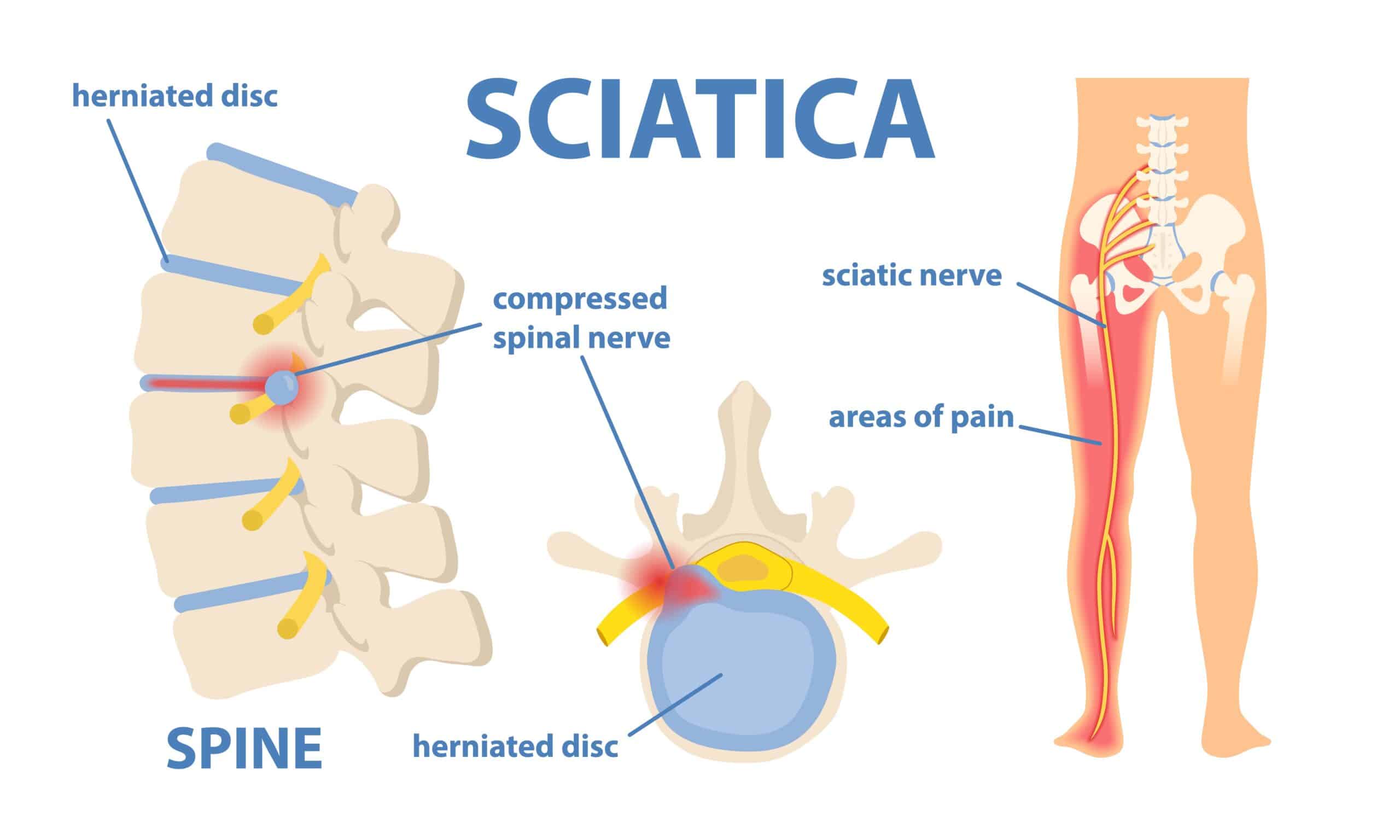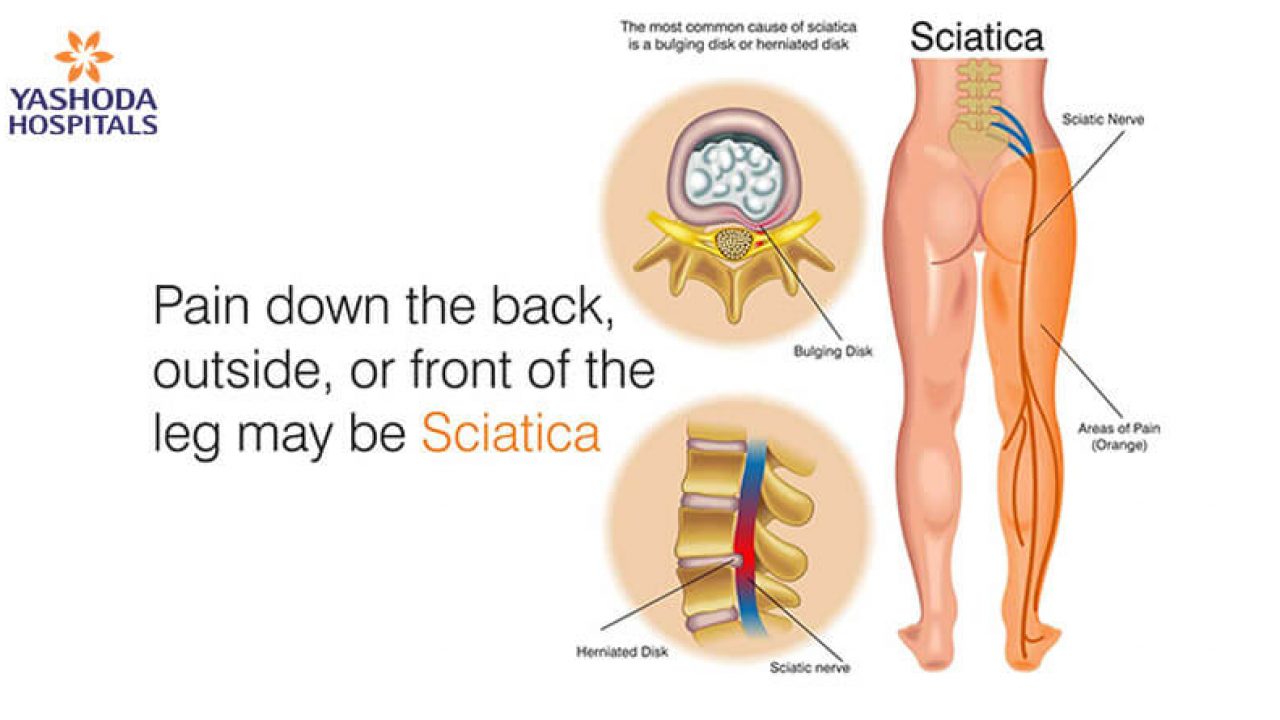- Get link
- X
- Other Apps
- Get link
- X
- Other Apps
Sciatica and Back pain are co-related, what are the causes, treatment, exercises, and symptoms of Sciatica? Although sciatica starts at the base of the spine, the issue doesn't just affect the back. As opposed to that, it sends a searing, electric-shock-like agony down one of your legs. Although each patient's level of pain is different, most people consider it to be incapacitating.
Your spine's surrounding nerves are impacted by sciatica. If you experience sciatica symptoms, the cause may not be a spine disorder that causes back discomfort.
The group at Pennsylvania Orthopedic Associates provides a range of therapies to control your symptoms since they are experts in treating sciatica. Simple actions can also be taken to stop such excruciatingly painful bursts that leave you gasping for air.
Sciatica and Back Pain: Causes, Treatment, Exercises, Symptoms
Lets learn below about Sciatica and Backpain: Causes, Treatment, Exercises, Symptoms:
Knowing about sciatica
Sciatica is the name for back discomfort that involves the nerves. Sciatica is a general word that refers to a problem that compresses or inflames your sciatic nerve.
Sometimes sciatica-related symptoms are brought on by a mechanical issue, such a herniated disc in your spine. Your spinal nerves become swollen or irritated as a result, resulting in sensations like:
- a low back ache
- your legs hurt
- burning feeling
- feeling tingly or numb
Depending on the underlying reason, the degree of sciatica symptoms varies. Typically, only one leg is affected at a time when you have leg pain or tingling, however depending on where your nerve is pinched, both legs may be impacted.
With home treatment, sciatica can occasionally go away on its own. To offer you the care you require, however, we must identify the underlying cause of your problem.
Physical issues that contribute to sciatica
Knowing what causes sciatica physically might help you predict and avoid situations that can set off an attack of pain. When problems that damage your spine pressure the sciatic nerve, sciatica results. Although a ruptured disc is the most common culprit, other disorders like bone spurs, spinal stenosis, degenerative disc degeneration, and trauma can all contribute to the issue.
Your spine's structural issues, such as a bulging disc or spinal stenosis, are frequently the cause of sciatica. Although these are typical reasons for sciatica, structural problems aren't the sole possibility.
Once the nerve is irritated and inflamed, sensations like pain, tingling, and numbness radiate down its whole length, via your legs and feet, to your buttocks. The nerve splits into multiple branches along the route, giving your leg the potential to experience discomfort.
There are some less common reasons for back discomfort that mimic sciatica. The following odd factors can result in symptoms of sciatica:
1. Endometriosis
Endometriosis develops when tissue that resembles the tissue in your uterus grows in other parts of your body, frequently resulting in excruciating discomfort. You can surely encounter sciatica sensations if you have endometriosis and are in your reproductive years.
If tissue develops around your spinal nerves, endometriosis may cause back discomfort or leg pain.
2. Shingles
The varicella-zoster virus, which also causes chickenpox in children, is responsible for the viral disease known as shingles. Oftentimes, shingles is accompanied with a painful rash on various parts of your body.
If you experience sciatica pain along with a severe rash in your lower back, buttocks, or upper thigh, you may have shingles. Before the rash forms, you could have low back discomfort and other symptoms.
3. Peripheral vascular disease
Back pain and other symptoms like sciatica might be brought on by peripheral vascular disease and other vascular issues. Vascular disease reduces blood supply to critical places in your legs, which can occasionally cause sciatica symptoms including weakness, tingling, and numbness.
Diabetes puts a person at risk for neuropathy and PVD, both of which can cause back discomfort. However, anybody can develop PVD or another vascular condition that looks like sciatica.
4. Prolonged sitting
One of the things most likely to contribute to sciatica's radiating pain is prolonged sitting. The discs in your lower back that are responsible for compressing the sciatic nerve are put under increased weight when you sit.
Every 20 minutes, get up and go for a little stroll to prevent sciatica. Taking a stroll can help prevent and treat sciatica pain since walking also helps with current symptoms.
Try not to stoop at the waist while standing up from a seated position. To keep pressure off the nerve, slid to the front of your chair and stood up straight.
 |
| Image: boroondaraosteopathy.com.au |
5. Keep things in your back pocket
Every time you sit down, anything you keep in the back pocket of your jeans or slacks, such as your wallet or phone, put pressure directly on the piriformis muscle. Items in your pocket may place enough strain on the sciatic nerve, which runs underneath this muscle, to result in sciatica.
6. Bending, twisting, and lifting
When performed incorrectly, bending, twisting, and lifting place additional strain on the vertebrae that are compressing the sciatic nerve, aggravating your sciatica. Pay attention to your daily routine as you go along so you can see the activities that put pressure on your lower back.
Sciatica issues can result from any physical activity that physically bends the spine or strains the muscles and ligaments supporting the spine. For instance, spending a lot of time in the yard digging causes your back muscles to get tense and strain on the vertebrae, worsening the pressure on the nerve.
7. Excess weight
Your entire body's weight is supported by your lower spine. The vertebrae close to the sciatic nerve are under increased pressure the more weight you carry. At the base of your spine, where the nerve enters and leaves between vertebrae, it is well situated to take the brunt of excessive pressure that exacerbates nerve compression.
According to studies, obesity and being overweight both have a dose-response effect on your likelihood of developing sciatica. In other words, as your weight grows, so does your risk of developing sciatica.
8. Footwear that is not supportive
Your sciatic nerve may experience compression depending on the shoes you wear. For instance, wearing high heels causes your body weight to change. As a result, you flex at the hips, placing pressure on the lower back muscles and vertebrae that are close to the sciatic nerve.
Shoes without cushioned insoles or with insufficient arch support can potentially cause sciatica. With these unsupportive shoes, every step you take has an effect that travels up your legs and into your lower back.
 |
| Image: www.yashodahospitals.com |
How to reduce your Sciatica that triggers back pain
At Integrated Body and Medicine, we investigate the root of your sciatica and back pain issues. Knowing the cause enables us to create a treatment plan just for you that will get rid of your symptoms.
Your treatment approach is tailored to your unique degree of pain and suffering. We advise using heat or ice at home if you have a mild to moderate case of sciatica. Other non-invasive therapies comprise:
- Physical exercise
- over-the-counter drugs
- anti-inflammatory medications
- Stretching
- chiropractor services
- massage treatment
Final thought
Even if they have nothing to do with your spine, we still need to address the primary source of your symptoms. We provide individualized treatment strategies to assist you in overcoming the primary cause of sciatica if an abnormal condition is the source of your back pain.
- Get link
- X
- Other Apps

Comments
Post a Comment